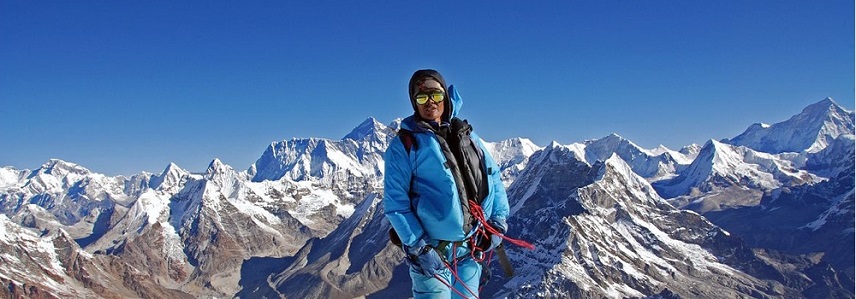Travel guide

Social Conventions
Be careful to respect local customs: never step over the feet of a person, always walk round; never offer food and drink that you have tasted or bitten; never offer or accept anything with the left hand, use the right or both hands. It is rude to point at a person or statue with a finger (or even with a foot).
Often when people shake their head, it means ‘yes’. Footwear should be removed when entering houses, especially kitchens, or shrines. Do not stand in front of a person who is eating. Shaking hands is not a common form of greeting; instead press the
palms together in a prayer-like gesture (Namaste).
Casual wear is suitable except for the most formal meetings or social occasions. However, bikinis, shorts, bare shoulders and backs may not be appreciated. Men only remove their shirts when bathing. Overt public displays of affection, especially near religious places, are inappropriate. Seek permission before entering a temple, and do not take leather articles inside them.
Photography: Always ask permission first. In general, it is allowed outside temples and at festivals, but not at religious ceremonies or inside temples; however, there is no hard and fast rule and the only way to be sure of not giving offence is to ask first and accept the answer.
Departure Tax
Rs791 for international flights to Bangladesh, Bhutan, India, the Maldives, Pakistan and Sri Lanka; Rs1,695 for flights to all other countries. Children under two years are exempt.
Main Airports
Kathmandu (KTM) (Tribhuvan) (website: www.tiairport.com.np) is 5.5km (3.5 miles) east of the city (journey time – 20 minutes). To/from the airport: Buses and taxis to the city are available. Facilities: Bank/bureau de change, duty-free shop, post office, refreshments and tourist information. Getting There by Road
Kathmandu is connected with India and Tibet by new and picturesque highways. Note importnt
All visitors entering Nepal by land must use one of the following entry points. From India – Sunauli, between Raxaul Bazaar and Birgan, Kakarbhitta and Mahendranagar. From China – Kodari. If entering overland by car, an international carnet is required (enquire at embassy for details; see General Info).
Overview
The following goods may be imported into Nepal without incurring customs duty:
- 200 cigarettes, 50 cigars or equivalent of other tobacco articles.
- One 1l bottle of alcoholic beverage.
- A reasonable amount of perfume for personal use.
Note important: (a) All baggage must be declared on arrival and departure. (b) Certain goods including cameras, videos and electronic goods may only be imported duty-free if they are exported on departure. They may not be left in Nepal. (c) Export certificates need to be obtained from the Department of Archaeology for the export of any metal statues, sacred paintings and similar objects.
Prohibited Exports
It is illegal to export goods over 100 years old.And illegal goods are striclty prohibited and if found guilty then the charges are high and will be sentenced to jail for long period of time. Getting Around By Air
A network of domestic flights radiates from Kathmandu, and links major towns, from Luklu and Pokhara to Simikot, Jomsom, Janakpur and Bharatpur. Many of these flights offer spectacular views across the mountains. But because of the ever-changing weather conditions, there are often last-minute delays and cancellations. Always give yourself plenty of time to catch connecting flights.
Nepal Airlines (NA) (website: www.nepalairlines.com.np) operates an extensive range of scheduled internal flights including to the trailheads for the main trekking routes. Other domestic airlines, including Yeti Airlines (OY) (website: www.yetiairlines.com), Buddha Air (BHA) (website: www.buddhaair.com),Fishtail Air, Dyanasty Air, Agni Air, Guna Air,Tara Air,Sita Air provides regular and charter services to popular destinations. Helicopters can be chartered for various purposes.
Note: Air fares must be paid in foreign currency by foreign nationals. Only Nepalese and Indian nationals are allowed to pay in Nepalese Rupees.
Getting Around by Rail
Nepal Railways Corporation Ltd operates a freight and passenger service in the eastern Terai. However, tourists aren’t allowed to cross the border on the passenger train.
Getting Around by Road
Traffic drives on the left. The interior parts of the country are linked with a number of motorable roads. The road system is of unpredictable quality. Many of the mountain and hill roads are impassable during the monsoon season (June to September).
Bus: There are regular bus services to Kathmandu from all the border points. Tickets may be booked in advance from travel agents in Thamel. Buses for the different parts of the country are available at the Gongabu bus terminal, which is located near Balaju. Services are operated by the Transport Corporation of Nepal and by private operators. Deluxe tourist buses are available from Kathmandu to Pokhara and Chitwan. Most of them depart at 0700 hour near Thamel. Six-seater sumo tato vans, 12-seater vans and air-conditioned minibuses are also available for long distance travel. Visitors should, however, be aware that multiple-fatality accidents on buses are common.
Bicycles and motorcycles: These can be hired easily from Thamel, Rani Pokhari and Jhochhen. Motorcyclists require a driving license. Cyclists should make sure they have a working bell and a scarf to cover their mouth and nose from powerful exhaust fumes.
Regulations: The minimum driving age is 18.
Getting Around Towns and Cities
There are bus services in the popular areas around Kathmandu valleys, which include the neighboring cities of Patan and Bhaktapur.Ther are tourist vehicles available for mojor cities like Chitwan, Pokhara, Lumbini.
Taxi: Metered taxis are plentiful in Kathmandu; at night, the meter reading plus 50% is standard. Private taxis are more expensive and fares should be agreed before departure.Rickshaws: These operate throughout Kathmandu. Fares should be negotiated in advance.

